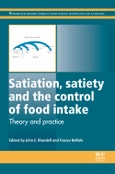With growing concerns about the rising incidence of obesity, there is interest in understanding how the human appetite contributes to energy balance and how it might be affected by the foods we consume, as well as other cultural and environmental factors. Satiation, satiety and the control of food intake provides a concise and authoritative overview of these areas. Part one introduces the concepts of satiation and satiety and discusses how these concepts can be quantified. Chapters in part two focus on biological factors of satiation and satiety before part three moves on to explore food composition factors. Chapters in part four discuss hedonic, cultural and environmental factors of satiation and satiety. Finally, part five explores public health implications and evaluates consumer understanding of satiation and satiety and related health claims.
- Provides a concise and authoritative overview of appetite regulation- Focuses on the effects of biological factors, food composition and hedonic, cultural and environmental factors affecting appetite control- Discusses implications for public health
Please Note: This is an On Demand product, delivery may take up to 11 working days after payment has been received.
- Provides a concise and authoritative overview of appetite regulation- Focuses on the effects of biological factors, food composition and hedonic, cultural and environmental factors affecting appetite control- Discusses implications for public health
Please Note: This is an On Demand product, delivery may take up to 11 working days after payment has been received.








